ウオーターベリーのオーバーボール
The overhaul of Waterbury machine
ウオーターベリー Waterbury machine
オーバーホール
Overhaul
ウオーターベリーの機械をオーバーホールしました。明治20~30年代にアメリカでつくられた機械です。つくられてから既に120年は経っていると思われます。
I overhauled the clock machine of Waterbury, which was made in America in 1887~1897(Meiji 20~30). The machine has been over 120 years.
Topic 1
Topic 1
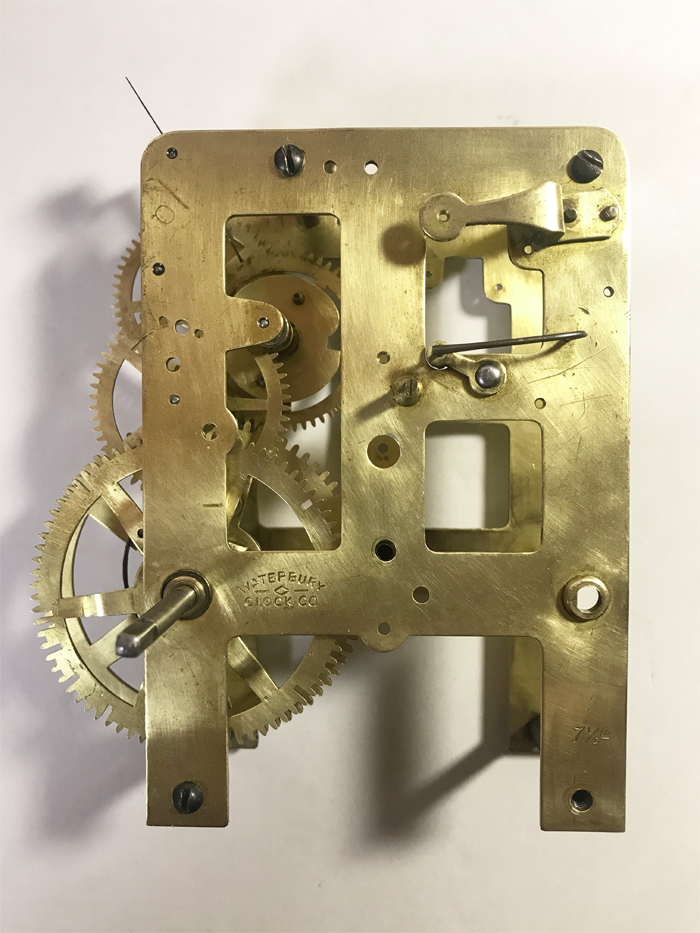
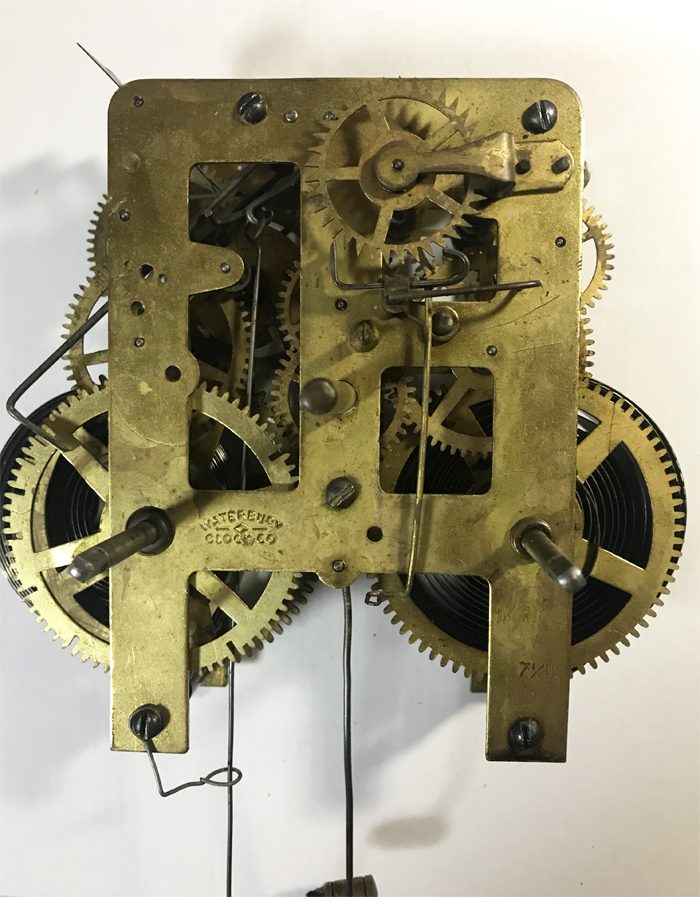
オーバーホール前の機械です
The machine before overhaul
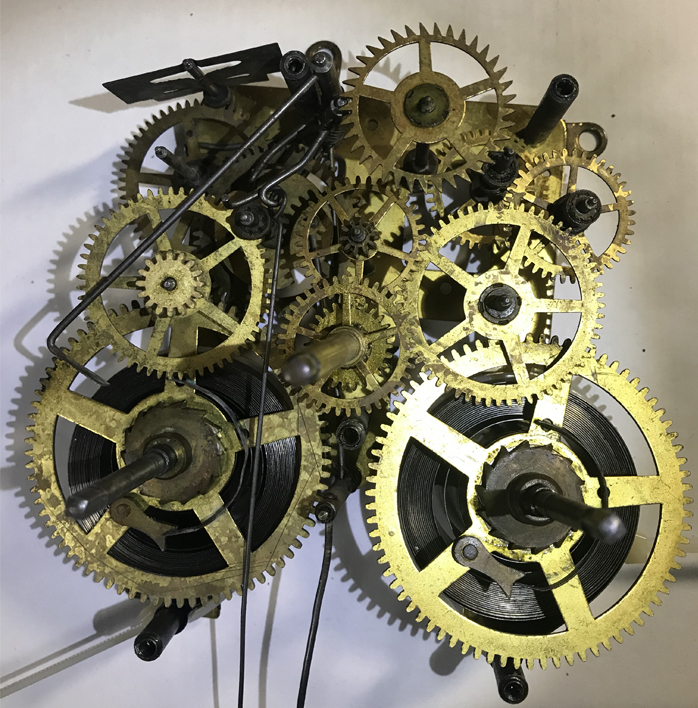
上プレートを外した様子です
The clock machine which was removed the upper plate
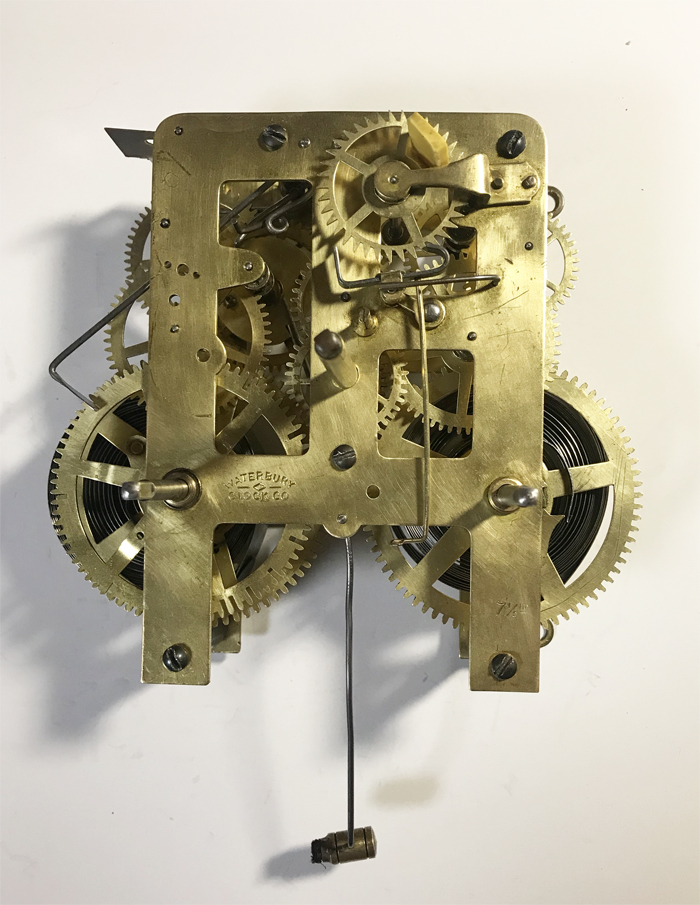
完成した機械です
The machine after overhaul
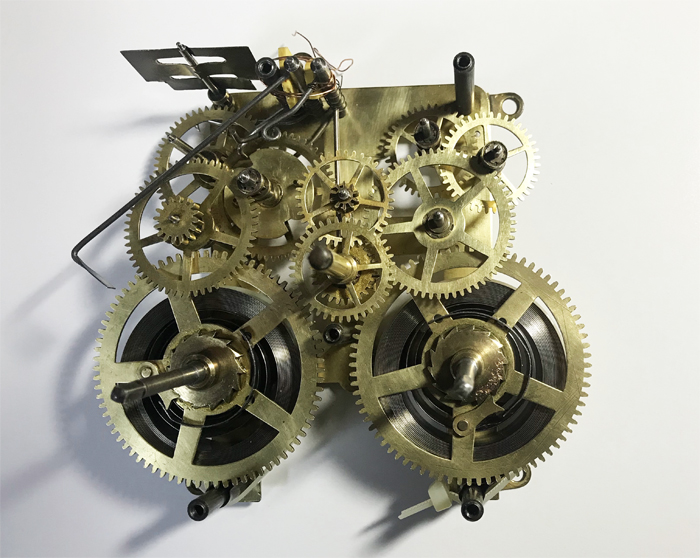
上プレートがない様子です
The view without the upper plate
各場面 each view
今回は、ほぞ穴の異常はそれほど無かったので、固まった油除去と全てのパーツの磨き上げだけで済みました。・・・機械は軽快に正確に動いています。
Because mortises of this machine are fortunately not so serious, all I have to do is to remove the old oil that has hardened, and polish all the parts.
・・・It is moving lightly and precisely now.
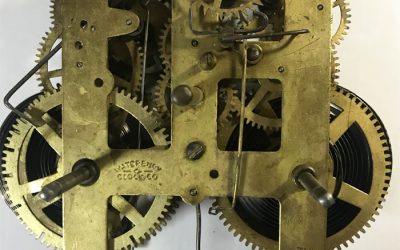
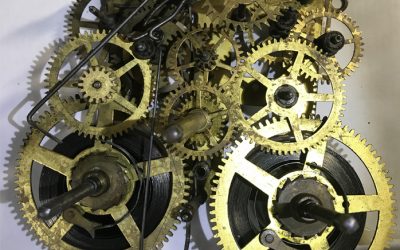
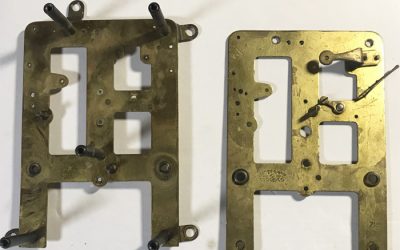
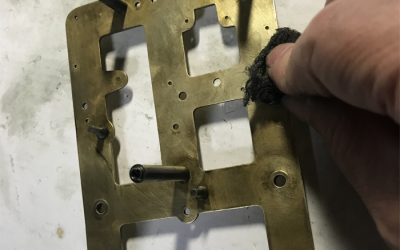
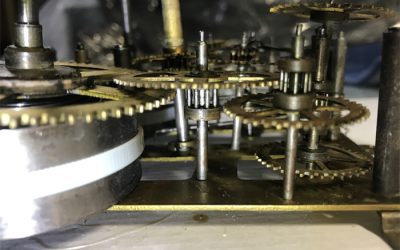
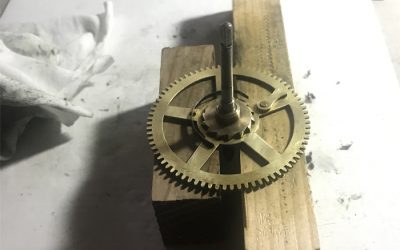
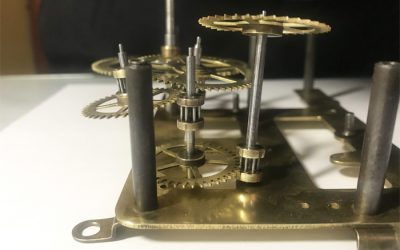
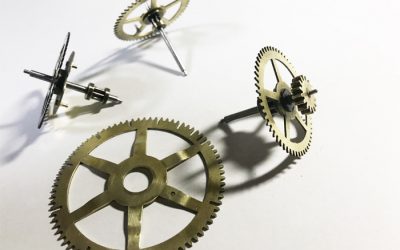
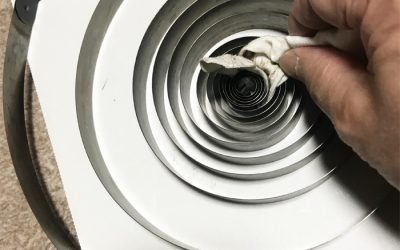
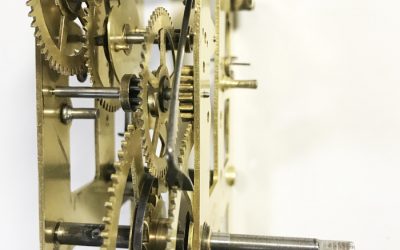
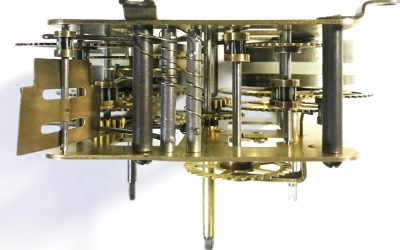
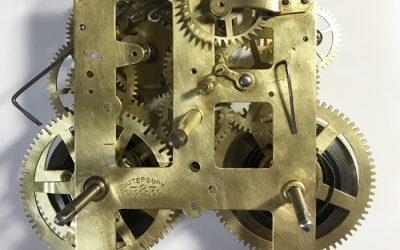
Waterbury’s machine around 1890
The movement after overhaul
組み立て時の調整
動いていても、文字盤を外してその機械を見てみると、すすに汚れ真っ黒になりながら動き続けている姿に、愕然とすることがあります。よく100年以上も動いているものだと驚かされます。
機械時計は、何てアナログなんだろう!分解掃除をするたびに思います。タイム-トレイン(時計の針を動かす機構)と、チャイム-トレイン(時報を鳴らす機構)のコンビネーションを見ていて、いつもそのアナログ臭さに酔いしれます。時間が来てチャイム(ゴング)を鳴らすために、ひと際働くのは数本の細い鉄棒です。中でも同時に動く三本の鉄棒です。(外からは全く分かりませんが、せっせと働いています)
三本がそれぞれの先にある部品を制御するため、ミリ単位で動く姿にまた感動します。
100年以上真っ黒になりながらも生きられる。少し手当をすれば、また100年先を期待できる。
デジタルの時代にあって、いつまでも生き続ける古時計たちに魅力を感じます。
さて、修理やクリーニングを終えて、組み立て時に気を付けることを、ということになれば、次の調整だと思います。
これさへ調整できれば、他は問題ありません。
(もちろん正しく歯車列や、その他の部品が元通りに配置されていることが前提ですが)
一人でも多くの方で、古時計を長生きさせましょう!
*スプリングの扱いも注意が必要ですが、次回にまわします。
アナログの面白さ
Adjustment When Assembling
Interest In Analog
Even the clock is moving, when I take off the clock face and look inside, I feel sorry to see the machine continue to move while blackened with soot.
I am surprised that it has been working for over hundred years.
Whenever I overhaul the clock machines, I can’t help thinking “How analog these are!” And I usually get drunken with its analog state seeing the combination with the time-train and the chime-train working exquisitely. When the time comes, it is several thin steel rods that begin to move to ring the chime. Especially three outstanding rods, which move in millimeters to control the parts at the end of each at the same time. (They are never seen from outside, but they work diligently.)
They can keep working over hundred years while blacken with soot. They can be expected to live another hundred years with a little help. I feel clocks attractive, which can stay alive forever.
Well, when we assemble the clock machine again after the overhaul, the thing which becomes to be important is adjustment of the machine.
If the adjustment will be done well, there might be nothing else particularly difficult. (Of course, it is assumed that the parts are correctly in their original positions.)
With as many people as possible, I’d like to keep the old clocks alive!
*It is important to be careful with dealing the spring, it will be next time.
各レバーの正しい位置
Correct position of each lever
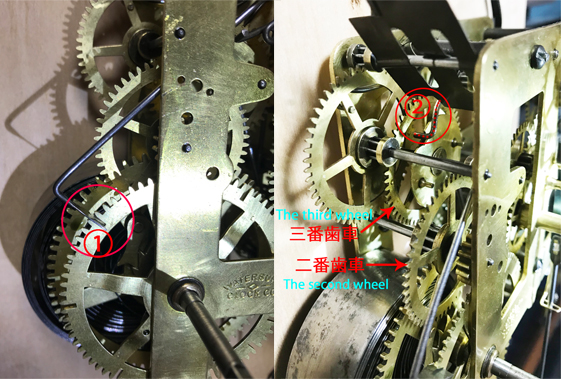
<各レバーの正しい位置>
・鎌の形をした①は、より深い溝の底まで落ち込んでいる。
・レバー②は、窪みの中にはまっている。
このように調整してください。
<The correct position of the each lever>
・The lever ① shaped a sickle is completely falling into the deeper slit.
・The lever ② is completely falling into the dent.
Adjust them in this way.
各レバーの間違った位置
Wrong position of each lever

①②共、レバーが落ち込んでいない。これでセットしても正しく鳴りを打たない。左のように、二番・三番歯車を動かして調整する。
Both ① and ② levers are not falling into the slit or the dent.
In this case, the chime doesn’t work correctly.
Adjust the each wheel (moving the second wheel and the third wheel ) to work correctly. (See to the left photos)